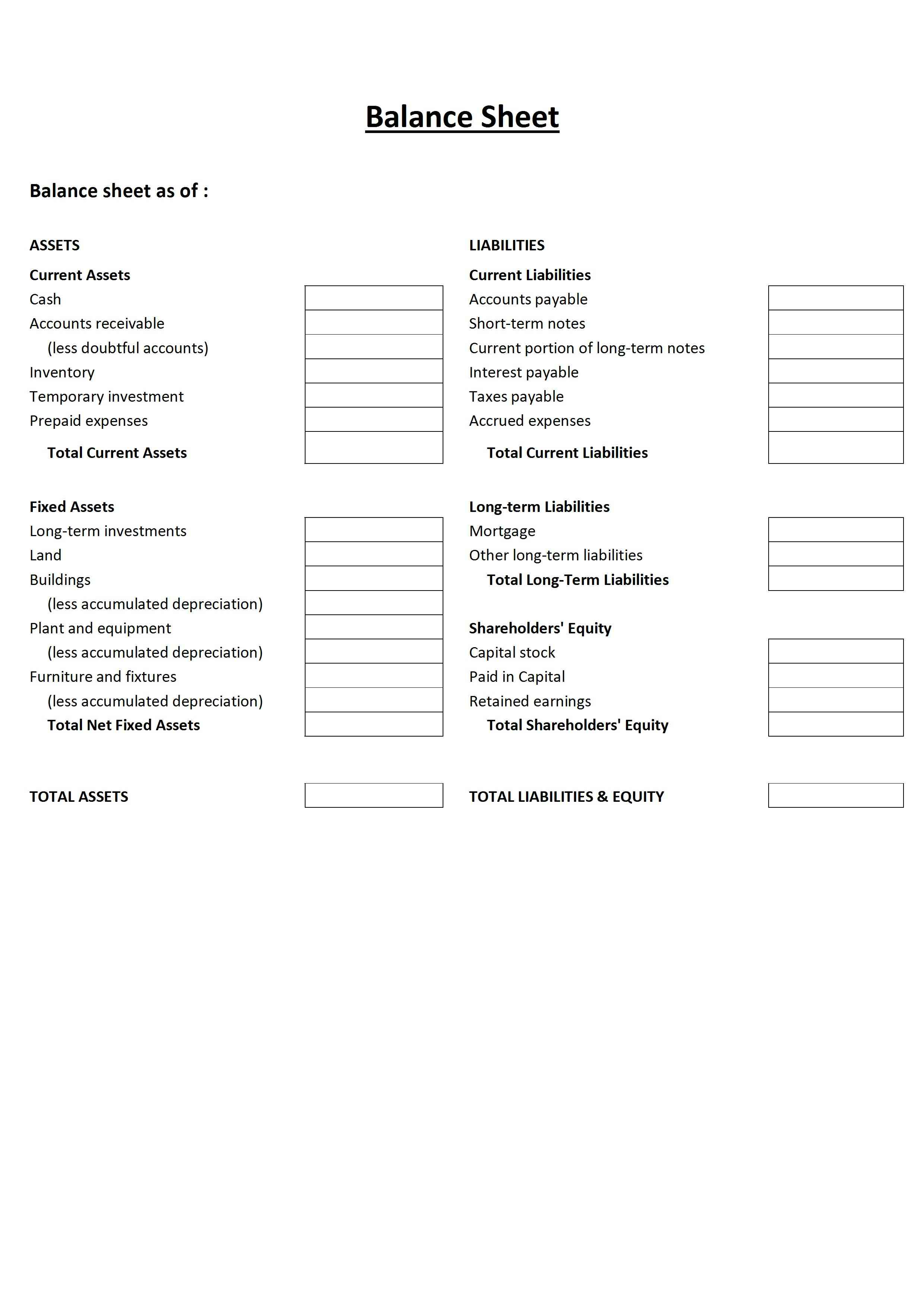
Combining them with other financial statements will provide the best assessment. From there, you can make changes to improve your business outcomes and boost your ROI. To ensure the balance sheet is balanced, it will be necessary to compare total assets against total liabilities plus equity. To do this, you’ll need to add liabilities and shareholders’ equity together. Depicting your total assets, liabilities, and net worth, this document offers a quick look into your financial health and can help inform lenders, investors, or stakeholders about your business. Based on its results, it can also provide you key insights to make important financial decisions.

Submit to get your retirement-readiness report.
Shareholders’ equity reflects how much a company has left after paying its liabilities. Assets are anything the company owns that holds some quantifiable value, which means that they could be liquidated and turned into cash. Balance sheets are useful tools for individual and institutional investors, as well as key stakeholders within an organization, as they show the general financial status of the company. Some liabilities are considered off the balance sheet, meaning they do not appear on the balance sheet.
How Balance Sheets Work
Financial position refers to how much resources are owned and controlled by a company (assets), and the claims against them (liabilities and capital). Assets, liabilities and capital balances are reported in a balance sheet, which is also known as statement of financial position. These financial statements can only show the financial metrics of your company at a single moment in time.
Assets
- They can also be used by individuals or households to get a high-level view of their current wealth and identify areas for improvement.
- In these instances, the investor will have to make allowances and/or defer to the experts.
- External auditors, on the other hand, might use a balance sheet to ensure a company is complying with any reporting laws it’s subject to.
In other words, it is the amount that can be handed over to shareholders after the debts have been paid and the assets have been liquidated. Equity is one of the most common ways to represent the net value of the company. Part of shareholder’s equity is retained earnings, which is a fixed percentage of the shareholder’s equity that has to be paid as dividends. When analyzing your business, understanding balance sheets marks the first step.
While investors and stakeholders may use a balance sheet to predict future performance, past performance is no guarantee of future results. Everything listed is an item that the company has control over and can use to run the business. Some financial ratios need data and information from the balance sheet. Business owners use these financial ratios to assess the profitability, solvency, liquidity, and turnover of a company and establish ways to improve the financial health of the company.
Why You Can Trust Finance Strategists
Pay attention to the debt-to-equity ratio, as it reveals your financial leverage. Lower debt levels imply lower financial risk, while higher ratios may suggest potential vulnerability. Proper working capital management, such as efficiently handling accounts receivable, accounts payable, and inventory, ensures optimal cash flow and operational efficiency.
Bench simplifies your small business accounting by combining intuitive software that automates the busywork with real, professional human support. Liabilities are presented as line items, subtotaled, and totaled on the balance sheet. The articles and research support materials available on this site are educational and are not intended to be investment or tax advice. All such information is provided solely for convenience purposes only and all users thereof should be guided accordingly. A lender will usually require a balance sheet of the company in order to secure a business plan.
It’s important to keep accurate balance sheets regularly for this reason. If you were to add up all of the resources a business owns (the assets) and subtract all of the claims from third parties (the liabilities), the residual leftover is the owners’ equity. Whether you’re a business owner, employee, or investor, understanding how to read and understand the information in a balance sheet is an essential financial accounting skill to have. Similar to the current ratio and quick ratio, the debt-to-equity ratio measures your company’s relationship to debt.
It can be sold at a later date to raise cash or reserved to repel a hostile takeover. Catch up on CNBC Select’s in-depth coverage of credit cards, banking and money, and follow us on TikTok, Facebook, Instagram and Twitter to stay up to date. Companies that report on an annual basis will often use December 31st as their reporting date, though they can choose any date. Liabilities are also separated into current and long-term categories.
Retained earnings are the net earnings a company either reinvests in the business or uses to pay off debt. The remaining amount is distributed to shareholders in the form of dividends. Enter your sales proper use of trademarks and trademark symbols and purchase figures to determine the gross profit margin using the Profit and Loss template. Calculate your indirect incomes and expenses and estimate the net profit margin of your company.
Annie is able to cover all of her liabilities comfortably—until we take her equipment assets out of the picture. Most of her assets are sunk in equipment, rather than quick-to-cash assets. With this in mind, she might aim to grow her easily liquidated assets by keeping more cash on hand in the business checking account. You can also compare your latest balance sheet to previous ones to examine how your finances have changed over time. If you need help understanding your balance sheet or need help putting together a balance sheet, consider hiring a bookkeeper. Long-term assets (or non-current assets), on the other hand, are things you don’t plan to convert to cash within a year.
